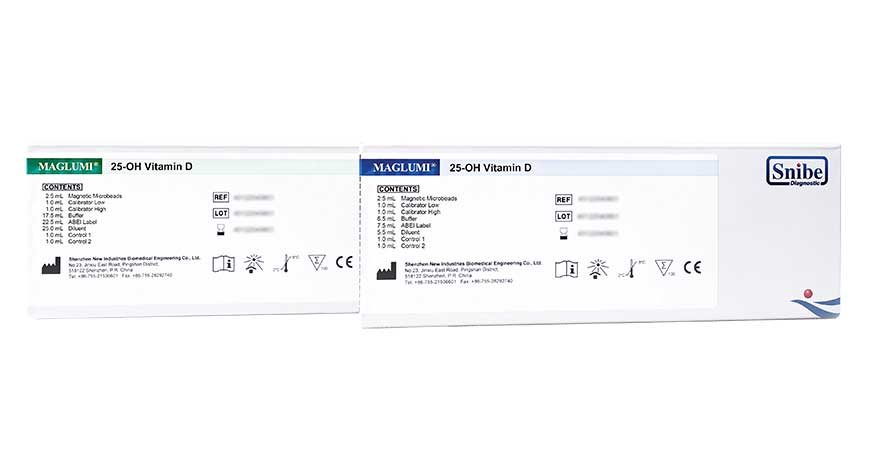Product Watch
Revolutionizing Vitamin D testing from Snibe India

The use of CLIA to detect small molecule has long been controversial. Traditionally, only competitive methods have been used. However, the constraints of the competition method make obtaining accurate results challenging.
Now, Snibe provides a novel solution to meet the challenge – a novel technology of small molecule sandwich detection.
So we are now introducing the new generation of 25-OH Vitamin D from Snibe, a revolutionary product that utilizes the small molecule sandwich detection technology as the principle base on the CLIA process. This innovative approach enhances the performance of the reagents, offering numerous advantages over traditional competitive CLIA methods.
The use of small molecule sandwich detection technique in CLIA distinguishes it from traditional competitive CLIA procedures for detecting small molecular. The innovative small molecule sandwich detection technology successfully addresses the constraints of poor sensitivity and linearity, accuracy concerns owing to imbalanced antibody combinations, and low specificity caused by single antibody use in competitive method.
Let us look at some of the advantages of Snibe’s new generation of 25-OH Vitamin D:
Higher sensitivity, with a lower limit of quantification (LoQ) of 1.50 ng/mL. This ensures more accurate and reliable results, especially in detecting lower levels of Vitamin D in patients. The improved precision of the test is evident in the within-run (≤4.23%), between-run (≤2.35%), and total precision (≤6.83%), ensuring consistent and dependable outcomes.
Accuracy. The LC-MS/MS detection method has traditionally been the gold standard for the detection of small molecules. The method provides precise quantification by mass-to-charge ratio of small molecules with high accuracy and specificity. The test results of Snibe’s 25-OH Vitamin D are in good agreement and a highly consistent result with the official reference measurement procedure LC-MS/MS, further validating its accuracy.
The wider linear range of the test, ranging from 1.50 ng/mL to 150 ng/mL, eliminates the need for additional test repeats, saving time and resources.
A higher recovery rate of 25-OH Vitamin D2, making it a more reliable tool for clinical interpretation. With a longer calibration interval of 28 days and compatibility with multiple sample types, such as human serum and plasma, it offers convenience and flexibility to healthcare professionals.
As mentioned above, Snibe’s 25-OH Vitamin D has a highly consistent test result with the gold standard LC-MS/MS method. But at resent, LC-MS/MS method is difficult to be widely used in the medical testing due to its limitations.
Unlike LC-MS/MS, which has limitations, such as limited throughput, time-consuming processes, and the requirement for expensive instrumentation and skilled operators, small molecule sandwich detection technology provides a simpler and more accessible alternative for detecting small molecular compounds in CLIA method. It minimizes the risk of organic solvent exposure and eliminates the requirement for specialized sample processing, making it a more user-friendly alternative in clinical diagnosis.
 Prof Praveen Sharma
Prof Praveen Sharma
Scientific Consultant,
Snibe India
I am thrilled to introduce one of our latest innovation, the new generation of 25-OH Vitamin D. By implementing small molecule sandwich detection technology in CLIA, we have overcome the limitations of traditional methods. This approach enhances sensitivity, precision, and reliability in Vitamin D testing. It offers a broader linear range and faster results. We believe this product will greatly benefit clinical laboratories and healthcare providers, ensuring accurate and efficient Vitamin D assessment. Snibe is proud to be at the forefront of small molecule sandwich detection technology.













